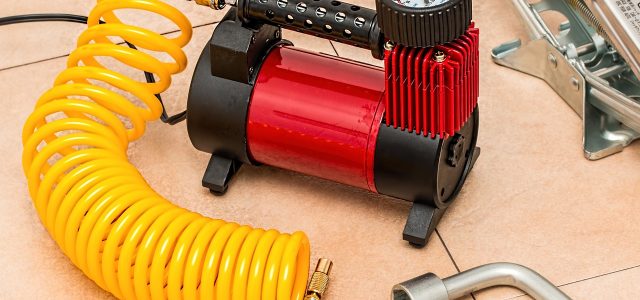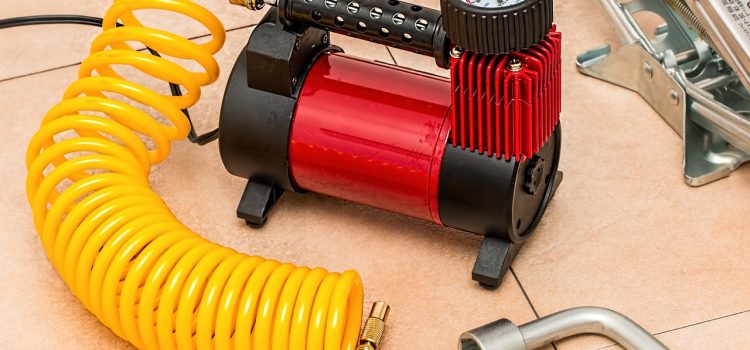

You’ve come out to your car after a trip into the grocery store and you see that one of your tires looks a little flatter than the others. What should you do?
Your first thought may be to head to the gas station to add more air to your tire. And, while that should be the end result, you need to first take the important step of checking the tire pressure. To ensure the best performance of your car or truck, having the tires filled to the correct psi (pounds per square inch) is one of the most basic steps.
Why Is Tire Pressure Important?
The most obvious reason people think about keeping their tires properly inflated is to prevent blowouts while driving down the road. But, there are a few other reasons that are also important to remember.
Tire Pressure Impacts Fuel Economy
According to this 2017 article by the U.S. Department of Energy, driving with a vehicle’s tires inflated to 75% of the recommended pressure can impact overall fuel economy by 2-3%.
And, if the tire pressure is reduced to 50% of the recommended pressure, the vehicle can use 5-10% more gasoline. That’s a significant difference in fuel economy when you consider a year’s worth of driving.
The reason for the increase in fuel for underinflated tires is that the rolling resistance of the vehicle increases. The rolling resistance of the vehicle is the amount of friction between the surface of the tires and the surface of the road as they come into contact with each other.
Over-Inflated Tires Can Reduce Handling Performance
The higher the air pressure in the tire, the less rubber is in contact with the road. When a tire has too much tire pressure, the result is that there is not enough rubber in contact with the road at any given time. So, while this might decrease the rolling resistance of the car, it also decreases your ability to control the vehicle and how it handles.
Having the proper tire pressure will ensure that your vehicle can have optimal performance both with daily driving and in emergency situations.
Improper Inflation Causes Uneven or Excessive Wear and Tear of the Tires
Tires do wear out eventually. You may have tires that are supposed to last 50,000 miles or you might have gone all out and bought tires that are supposed to last 100,000 miles.
But, regardless of the quality or cost of the tires you purchased, if you don’t maintain the proper tire pressure, they can wear out much sooner than you would like. And when that happens, your visit to the tire store probably won’t be a happy one.
Determining the Correct Tire Pressure
Before you check your tire pressure, you’ll want to know the recommended tire pressure for your vehicle.
While the printing on the tire wall will tell you the maximum psi for your tires, each vehicle actually has a factory-recommended tire pressure. This factory recommendation is the correct target for your specific vehicle to ensure proper performance and ideal fuel economy.
You can find the manufacturer’s recommendation in the owner’s manual of your vehicle or on the printed tag inside the driver’s side door jam.
Some vehicles will have just one number listed, while others may have specifications for hot and cold tire pressures. Cold tire pressure can be measured when your car either hasn’t been driven or if you’ve only gone a few miles. Hot tire pressure is measured when you’ve been driving around for a while.
How to Check the Tire Pressure at Home
To check your tire pressure at home (or anywhere), you need a special tool called an air pressure gauge. These can be purchased at a very low cost from gas stations, auto parts stores, the auto care section in department stores, or even Amazon.
Keep this air pressure gauge in the glove compartment of your car so you can use it anywhere at any time. Once you have the tool, the steps to check your air pressure are simple:
- Locate the valve stem of the tire and unscrew the plastic cap. Don’t lose this – you will need to put it back on shortly.
- Put the round end of the gauge over the end of the valve stem.
- Ensure there is a good seal by using some force to push the air pressure gauge fully onto the valve stem.
- You will hear a small noise and the bottom of the air pressure gauge will pop out.
- At this time, you can read the numbers and lines on the gauge to determine your current tire pressure.
- Remove the air pressure gauge from the valve stem and replace the small plastic cap.
- Repeat with the remaining three tires.
If you aren’t sure it’s accurate, remove the air pressure gauge from the valve stem and repeat the process from the beginning.
How to Check Tire Pressure at the Gas Station
If you don’t have an air pressure gauge at home, don’t worry. Many gas stations have an air compressor with a built-in gauge for reading your tire pressure.
Be sure to bring a stack of quarters with you! While a few gas stations do still offer free air, most will charge a few dollars to use the coin-operated air compressor. Click here for an interactive map to find where you may get free air.
Park close to the air compressor and complete the following steps:
- Locate the valve stem of the tire and unscrew the plastic cap. Put it somewhere safe, so you don’t lose it in the gas station parking lot.
- Pull the hose over to your tire. (You shouldn’t have to insert quarters just to measure the tire pressure, so wait to put those in until you know if you need to add air.)
- You will see that the hose has a trigger for starting the air flow and also an air pressure gauge at the end of the nozzle.
- Put the nozzle over the end of your valve stem. Do NOT press the trigger yet.
- Use pressure to ensure a good seal between the nozzle and your valve stem.
- You will hear a small noise and the bottom of the air pressure gauge will pop out.
- At this time, you can read the numbers and lines on the gauge to determine your current tire pressure.
- If the pressure looks good, place the plastic cap back on the valve stem and repeat the process with the remaining three tires.
How to Adjust the Tire Pressure
Now that you’ve checked your tire pressure at home or at the gas station, you may have discovered that you need to add or remove air from one or more of your tires. Both processes are fairly straightforward.
Decreasing the Tire Pressure
To remove air from a tire, you can use the non-rounded end of the air pressure gauge. Just place it in the end of the valve stem and you will hear the hissing noise of air being released. Just do it for a few seconds at a time and check the tire pressure with the gauge continually to avoid letting out too much air.
Increasing the Tire Pressure
For this, you will likely need to head to the gas station to use their air compressor. As stated earlier, bring quarters for this.
Follow the same steps listed above, only this time insert the quarters into the machine and push the trigger once the hose is connected to the valve stem. Insert air a few seconds at a time, stopping frequently to check the tire pressure and ensure you don’t add too much air.
Proper Tire Pressure Prolongs Tire Life
Now that you know how to check your vehicle’s tire pressure, we hope you’ll add this to your routine on a regular basis. By ensuring your tires are properly inflated, you’ll ensure your own safety, your vehicle’s best fuel economy, and the longest life possible for your tires.
This is something you can easily do yourself without the help of a professional and we hope that checking your own tire pressure helps you feel more empowered in the overall care of your vehicle. For more information about the importance of maintaining the correct tire pressure, check out this resource from dmv.org.

No comments so far.
Be first to leave comment below.